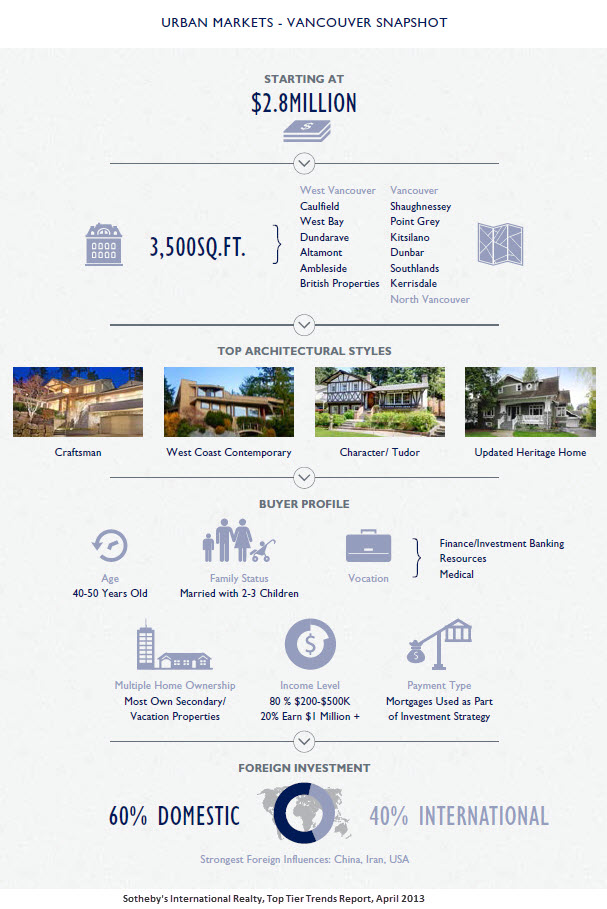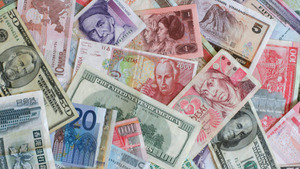Elizabeth Wilson
Other


When it comes to foreign ownership of Vancouver real estate, we operate in a data vacuum. No agency collects information on where home buyers come from. It’s not that this is an impossible task: Australia, Alberta, Switzerland, and many other places routinely keep track of foreign buyers. We don’t.
We know investors and speculators are buying here. We see their influence in desirable neighbourhoods where prices have spiralled up steadily, or in downtown condos with most of their windows dark at night because no one’s home. We see the influence of investment buyers when they suddenly disappear, leaving their former haunts with escalated prices and few buyers.
A couple of recent studies have tried to identify segments of the foreign investor market. And while they’re not wholly successful, at least they give us data – something sorely missing from the uproar about foreign ownership and investment in Greater Vancouver housing.
Luxury House Buyers
A new report from Sotheby’s International Realty found that foreign buyers make up 40% of the luxury single-family home market in Greater Vancouver. Most come from China, but “There has also been a recent surge in buyers from Iran and the United States.”
The Top Tier Trends Report surveyed the top agents in Sotheby’s Canadian network to find out who’s buying luxury houses in Vancouver, Toronto and Montreal. It also asked about those buyers’ preferences.
It defined a luxury home in Vancouver as having at least 3,500 sq.ft. and an entry-level price point averaging $2.8 million (compared to $2 million in Toronto and Calgary, and $3.5 million in Montreal). However, the minimum price point for a luxury house in Vancouver varies widely depending on the neighbourhood. The West Side fetches a $4 million minimum price. The bottom of West Vancouver’s high-end is a relative bargain at $2.5 million. And at $2 million, an entry-level luxury house in North Vancouver is cheap like borscht, if you have that kind of money.
Andy Yan’s Non-Resident Occupancy Study
The Sotheby’s survey didn’t cover condos or non-luxury homes. But Andy Yan, Senior Urban Planner with Bing Thom Architects, took on the task of identifying investor-owned properties of all kinds in 2008 and has been honing his measurements ever since.
He uses a range of methods to try to peg foreign investor-owned properties in the City of Vancouver including:
- BC Assessment notices sent outside Metro Vancouver
- BC Hydro bills that show under 150 kwh of power usage
- Strata minutes revealing the number of renters or empty units…
… And most recently, the 2011 census numbers for unoccupied dwellings and those “occupied solely by foreign residents and/or by temporarily present persons.”
After a great deal of number crunching Yan says, “It isn’t as easy to measure foreign investment in Vancouver real estate as to talk about foreign investment in Vancouver real estate.”
In a later blog post he adds, ” … we strongly believe that many Downtown condos are investor owned/non-owner occupied. However, there is no simple and direct method of determining whether this investment is held by a Canadian or not. The nationalities/citizenship status of these investors is not readily known through these data sets.”
Yan presented his findings during a recent SFU Woodward’s panel discussion called “Foreign Investment in Vancouver Real Estate.” The big takeaways from that discussion were that a) we need to talk about investment as a whole, not just foreign investment, and b) we can’t talk about it intelligently if we don’t have hard numbers, so we need to start tracking properties that are bought for investment purposes, and where those investors come from.
In the slide that got the most attention, Yan restricted himself to simply identifying non-resident occupancy, i.e., people (local or not) who own condos but either rent them out, live in them part time or leave them empty. He created this map showing the concentrations of non-resident occupancy in the City of Vancouver.
While the City of Vancouver as a whole had 7.7 per cent non-resident occupancy, parts of Downtown had up to 23.7 per cent – almost one in four.
Both the Sotheby’s survey and Andy Yan’s research show that location matters. Investors tend to cluster in neighbourhoods that suit their needs. And by flooding into a neighbourhood, they change it. This is a major reason Yan recommends finding reliable methods to measure homes bought for investment.
As he said in his presentation, “Is the issue really more about investment in Vancouver real estate and the kind of behaviours that occur with that investment?”
He’s talking about the mentality where owners see their property as simply an investment vehicle, and they’re not involved in the life of the community.
He concludes, “… I think we live in a remarkable urban, global age. And while I’m not sure about foreign investment in Vancouver real estate, I really do believe that like many other cities around the world, money floats. And money in the world is coming to Vancouver just as much as it’s coming to San Francisco or Singapore….” and where it ultimately parks in a city, fundamentally presents challenges if we are to aspire to a sustainable, liveable and just city.
“And where it’s parking in a city perhaps means that we are posed a challenge towards rethinking some of those parking rules.”
The two studies are a good start on opening up the discussion.
© 2013 Real Estate Weekly

